We are well into winter and the holiday season is over, but the fun doesn’t have to (and shouldn’t!) end. We are fortunate to live in Colorado, where options for winter sports activities abound. It is so easy (well, except for the traffic) to get from Denver to amazing places like Aspen, Keystone, Breckenridge, Copper Mountain, Snowmass, Telluride, Steamboat Springs, Arapahoe Basin, Vail and so many more to participate in world class winter sports activities. Heck, there are plenty even in Metro Denver! There are great sledding hills in Littleton, awesome ice skating in Lakewood, and plenty of great things in Denver, Centennial and elsewhere. These kinds of activities are fun and nourishing on so many levels. Health care for your child is not just about treating illnesses and injuries. Integrative and holistic pediatric care encompasses prevention, as well as treatment, and addresses the mind, body and spirit. Physical activity is important to all of these components and doesn’t have to stop just because it is wintry outside. With a little preparation and some awareness of the risks and how to address them, your child can remain active throughout the winter season, while you and your family wait for warmer weather to return.
Some Basic Winter Sports Safety Tips
- Check the weather forecast before heading outside and dress appropriately: Children can get cold faster than adults, and it is helpful to dress them in layers to protect them against the cold. Begin with a bottom layer made of nylon or silk (avoid cotton) that will wick away moisture, then add insulating middle layers, and a waterproof/windproof outer layer, or shell. (Being able to add or remove layers with changing weather conditions helps avoid overheating or hypothermia.) Make sure they wear a warm hat, mittens or gloves, scarf, socks and nonskid boots. You should consider choosing bright colors so others can see your child more easily.
- Give your child a snack before going outdoors: A snack before heading outside will give your kids energy. As you know, getting dressed to go outside can be an effort, and you want your kids to be able to enjoy the outdoors for a reasonable length of time before they get hungry or tired and want to come in. If possible, children should be brought indoors for breaks about once an hour to warm up and drink fluids.
- Protect your child from the sun: As you know from living in the Mile High City, your child’s eyes should be protected from harmful sun rays with goggles or sunglasses. Be sure to apply sunscreen and lip balm with SPF to protect your child from sunburn, even on cloudy days.
- Check on your child: Children, particularly the very young, can lose body heat quickly, and it is important to check on them often when they are playing outside. As necessary, replace wet clothes with warm and dry clothes. If you see white patches of skin on their hands, feet or face (the first sign of frostbite), bring them indoors immediately and call your doctor.
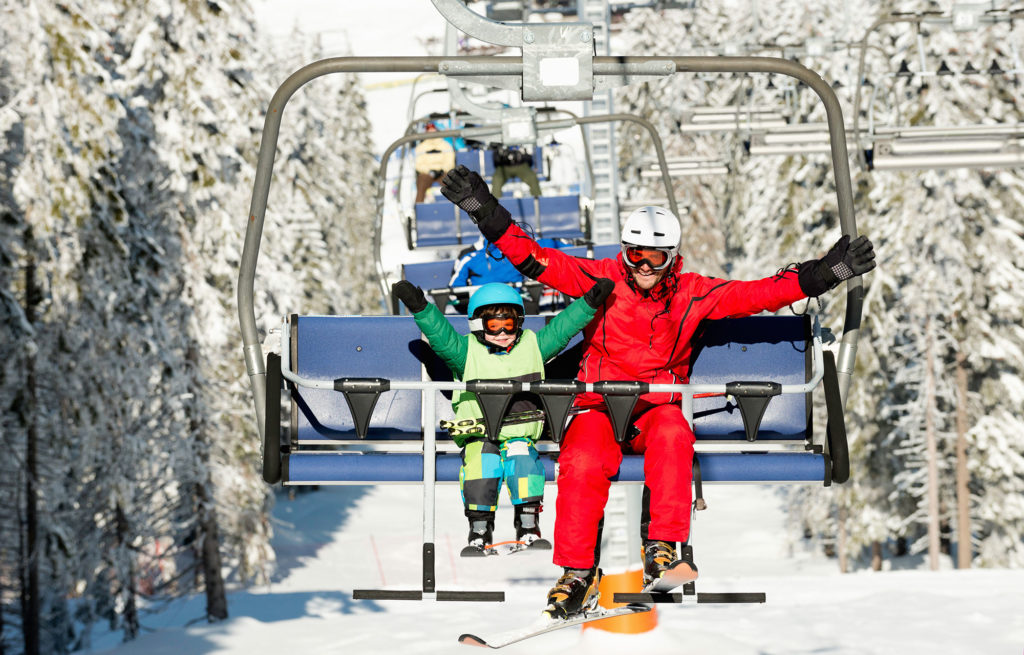
Popular Winter Sports: Equipment and Guidelines For Kids
1) Skiing and Snowboarding: Think about the Rocky Mountains, and your mind naturally turns to thoughts of skiing and snowboarding! As anyone who has ever hit the slopes knows, the key to safe skiing and snowboarding is control. To have good control, a child must learn proper skills, be aware of others on the slopes, know when to adjust to changing snow conditions, and learn how to fall safely. Qualified instructors and classes can help kids develop these skills, with most ski resorts beginning ski school at age 4 and snowboarding lessons at age 7.
Safety gear should fit properly and be well-maintained:
- Bindings should be properly adjusted and should be checked at least once a year by a qualified technician. Bindings and boots which do not fit properly or are not properly adjusted are a risk factor for injury.
- Snowboarders should only use boards with full-length steel edges and stiff secure bindings. The board leash should be securely attached. Children should use short boards no more than chest high.
- Insist that your child wear a properly fitting snow sport helmet. Snowboarders need wrist guards in addition to helmets, and knee pads are also a good way to help prevent injuries.
- Goggles, to reduce the glare from the reflection off the snow, should fit with the helmet being used and be made of polycarbonate or a similar material that conforms to the standards of the American Society for Testing and Materials (ASTM).
The American Academy of Pediatrics (AAP) suggests that having your child practice with the right equipment and safety gear inside the home and in your backyard can make the transition to the actual slopes easier. Makes sense!
A few more tips to make skiing and snowboarding safer and more enjoyable:
- Children should never ski or snowboard alone–follow the “buddy system.” Younger kids need adult supervision, and teens or young adults should have a buddy with them.
- Encourage your kids to do warm-up exercises and stretches before each day’s skiing or snowboarding. Specific exercises to build muscle, strength, and endurance also can help.
- Children should stick with hills that are best for their skill level. Make sure that your kiddos know that, if they find themselves on a slope that is too difficult, they should take off their equipment and side-step down the slope.
- Stay on marked trails and follow the rules of the slopes and of ski lifts. Be sure that your child knows these rules!
- Have your kids quit before they get tired and before it gets dark–fatigue and poor visibility are factors that can lead to injuries.
- Plan snack and water breaks during a day on the slopes to help avoid fatigue and dehydration.
- Your child should NEVER be pulled on skis or a snowboard behind a vehicle.
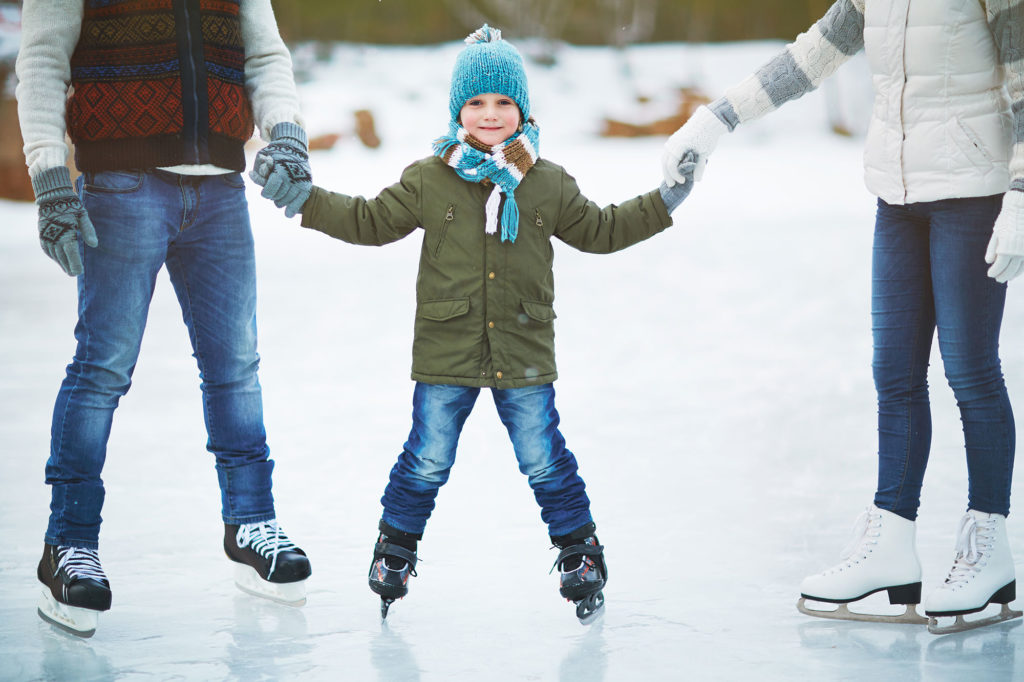
2) Ice Skating:
The Denver metro area offers many opportunities for ice skating fun, both indoors and outdoors!
When your child is learning to skate, you may want to consider taking them to an indoor rink for at least the first few times. In order to help your child gain confidence and have room to freely skate with fewer chances of collisions with other skaters, try and be at the rink when it is less crowded. You can check and see if the rink has special times for beginning skaters. Remember to never let your child skate alone.
When skating outside, make sure that the ice is thick enough for skating (at least 6 in. for individuals and 8 in. for groups). (The color of ice can be an indication of its strength, with clear, blue ice being the strongest and gray ice being unsafe.) Check for signs posted by local police or recreation departments, or call your local police department to find out which areas have been approved. If you are not sure how thick the ice is, do not go out on it! Beware of quick thaws which can weaken the ice surface, and look for ice that is uneven, cracked or has holes as that could lead to trips, falls or even worse. (You should always have a plan in case the ice breaks and you need to call for help.) Children should never skate alone and should always skate in safe areas, away from traffic and free of obstacles.
Regardless of where your child skates, remember the following:
- Skates should give good ankle support and fit snugly–neither too large nor too small. Skate blades should not be dull or rusted.
- Teach your children to not touch the skate blade as it can be very sharp and can cut them. It is recommended that you put your child’s skates on them for the first few times and then supervise them until they get the hang of doing it alone.
- Teach your kids to skate in the same direction as the crowd and to avoid darting across the ice.
- Your child should not chew gum or eat candy while skating.
- It is wise to have your child wear a helmet, particularly (although not limited to) when learning to skate. Knee pads and elbow pads are also a good idea.
3) Sledding/Tobogganing (“Sledding”):
Most parents have memories of going down a hill on a sled or toboggan (“sled”), seemingly flying. It is natural to want your kiddos to share in this joy! Before you head to the hills, though, think about equipment. Sleds should be structurally sound and free of sharp edges and splinters, and the steering mechanism should be well lubricated. It is best to buy a sled that your child can steer and has brakes to slow it down. Avoid sleds that can’t be steered, such as saucers, plastic toboggans, inner tubes, lunch trays, or cardboard boxes. As with other winter sports, your child should wear a properly fitting snow sport helmet when sledding. Do NOT dress your child in scarves or any type of clothing that can get caught in a sled, posing a risk of strangulation.
Sledding can be so much fun and provides good exercise, but there are some safety rules to consider:
- Children should be supervised while sledding. Young kids (5 and under) should sled with an adult, and kids under 12 should be actively watched at all times.
- Pick a hill that is not too steep and has a long flat area at the bottom so your child can glide to a stop. Avoid hills that end near a street, parking lot, pond, trees, fences or other hazards.
- Make sure a hill is safe before your child starts to sled. A hill should be free of trees, rocks, bumps, fences and bare spots and should have no ice patches. Don’t build artificial jumps or obstacles on a sledding hill.
- Avoid sledding in crowded areas. Teach your child to watch out for other sledders.
- It is best to have your child sled during the daytime when visibility is better. If your child goes sledding at night, make sure the hill is well lit, with all hazards visible.
- Always have your child sit facing forward on the sled. Never let your child sled down a hill sitting backwards, while standing, or face-first, which greatly increases the risk of a head injury. Lying flat on their back while sledding is also not recommended as this increases the risk of injuring the spine or spinal cord.
- Have your kiddos keep their arms and legs within the sled at all times. Teach them how to stop the sled if they need to get off quickly, and teach them to move out of the way if they fall off the sled. Teach them also that, if they find themselves on a sled that won’t stop, to roll off of it and move away.
- Teach your child that, after finishing a run, they should move quickly to the side, away from the sliding path, and walk up the side of the hill, leaving the middle open for other sledders.
- Consider having only one sled go down a hill at a time and with only one person per sled (except for adults with young children).
- NEVER let your child ride a sled that is being pulled by a moving vehicle.
4) Snowmobiling:
Regardless of whether you, as a parent, enjoy snowmobiling, the AAP recommends that children under age 16 NOT operate snowmobiles, and that children under age 6 NEVER ride on snowmobiles. Many children are seriously injured each year in snowmobile accidents. When your child IS old enough to participate in snowmobiling, please remember the following guidelines:
- Learn how to operate a snowmobile before going snowmobiling with your child. You can contact your local snowmobile association if you are looking for an instructor.
- Have all riders wear protective gear, including goggles and a safety helmet approved for use on motorized vehicles (such as motorcycles).
- Stay on marked trails, away from roads, water, railroads and pedestrians. Avoid unsafe areas like thin ice and steep, avalanche-prone slopes.
- Try to snowmobile in groups, and be alert to other snowmobiles.
- Start with a full tank of gas, drive at safe speeds, and don’t snowmobile alone or at night.
- NEVER use a snowmobile to pull a sled or skiers.
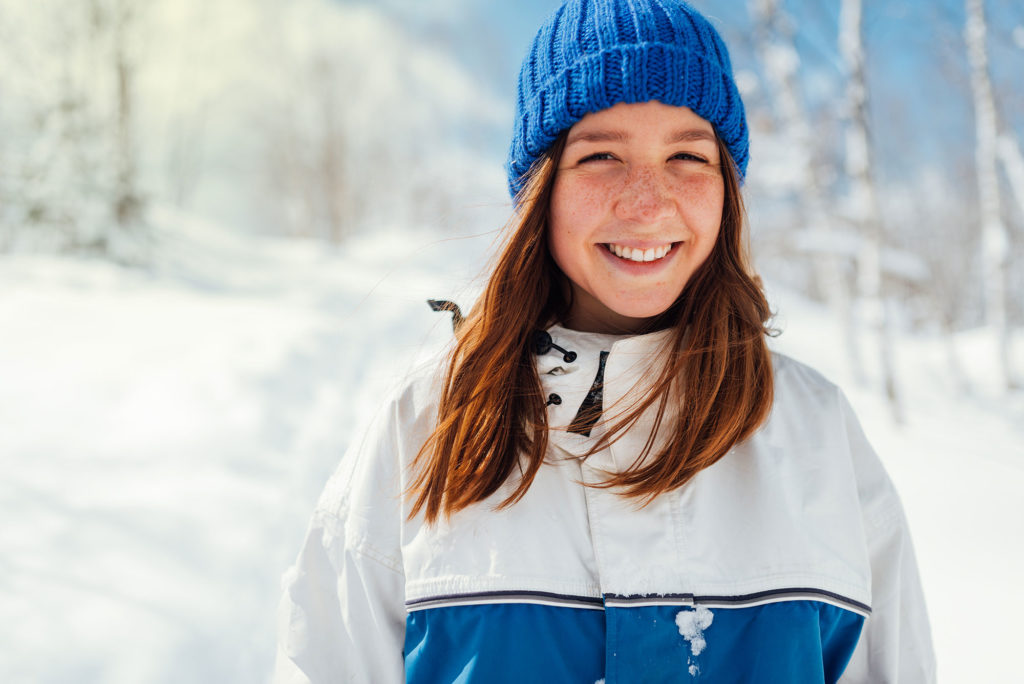
Hopefully the above information will help you and your family to enjoy an injury-free winter season of fun! If, however, despite your best efforts, your child does suffer some injury, you know where to turn. As your Denver integrative pediatrician, providing complementary and alternative care as well as practicing conventional medicine, we will do what we can to get your child back on the road to health and additional winter fun as quickly as possible. So have fun out there and be safe!
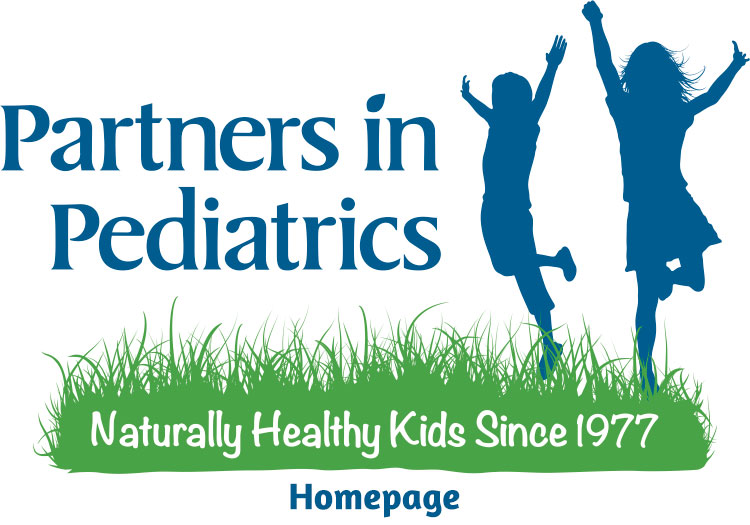

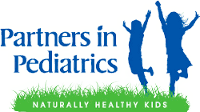
Leave a Reply